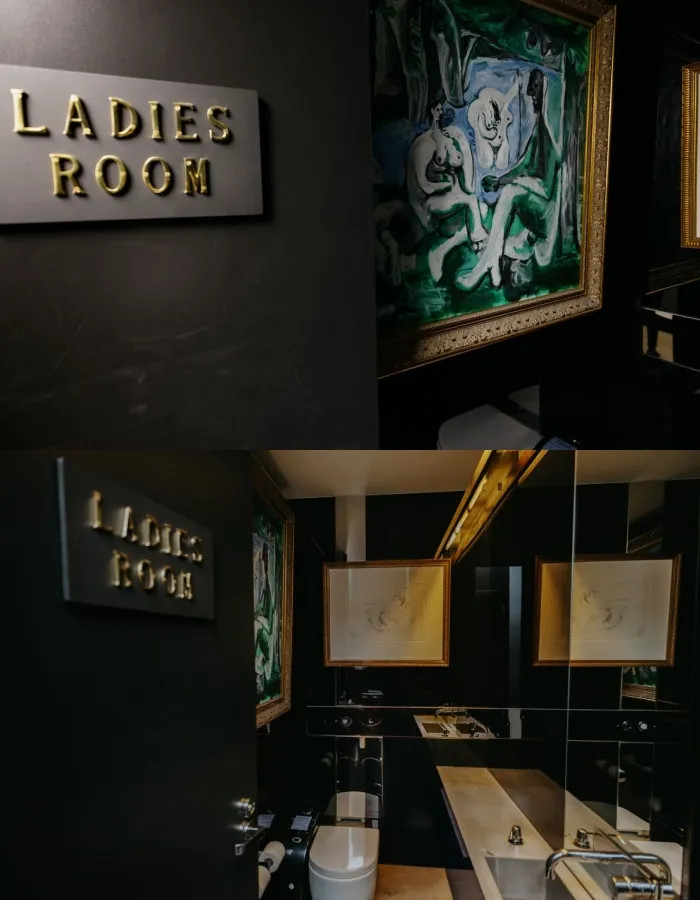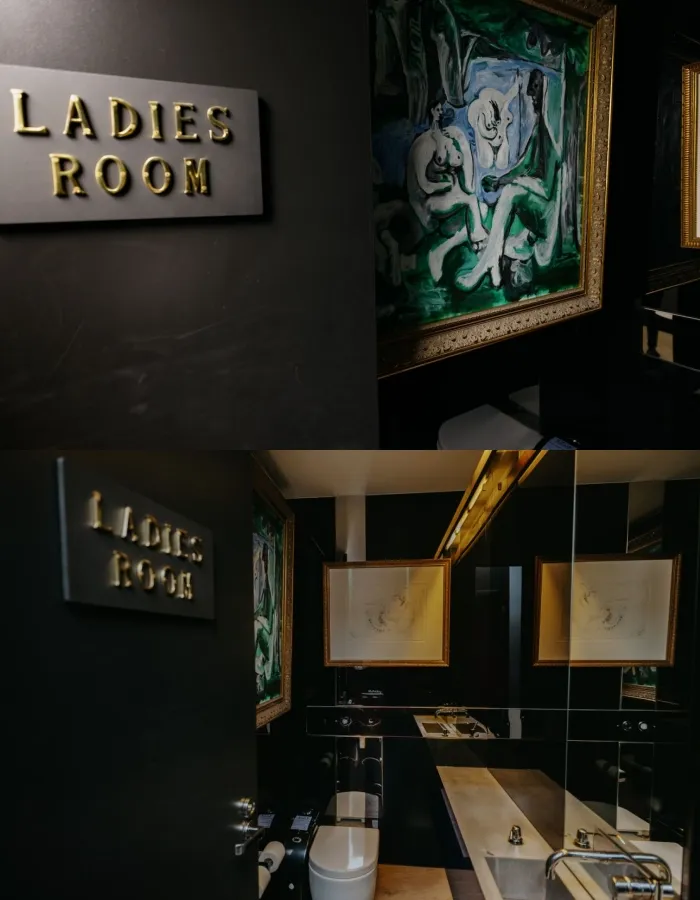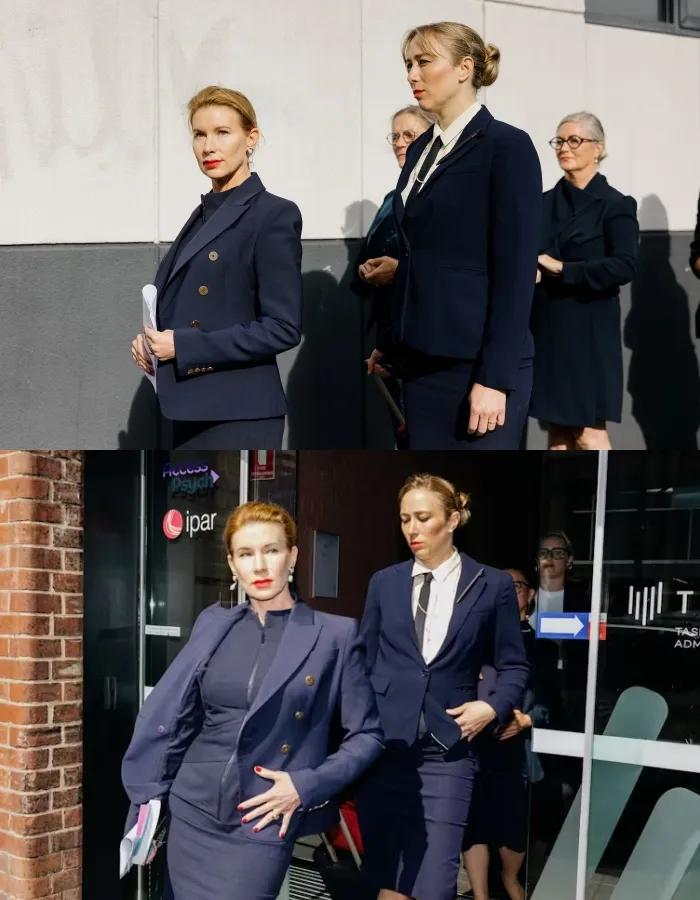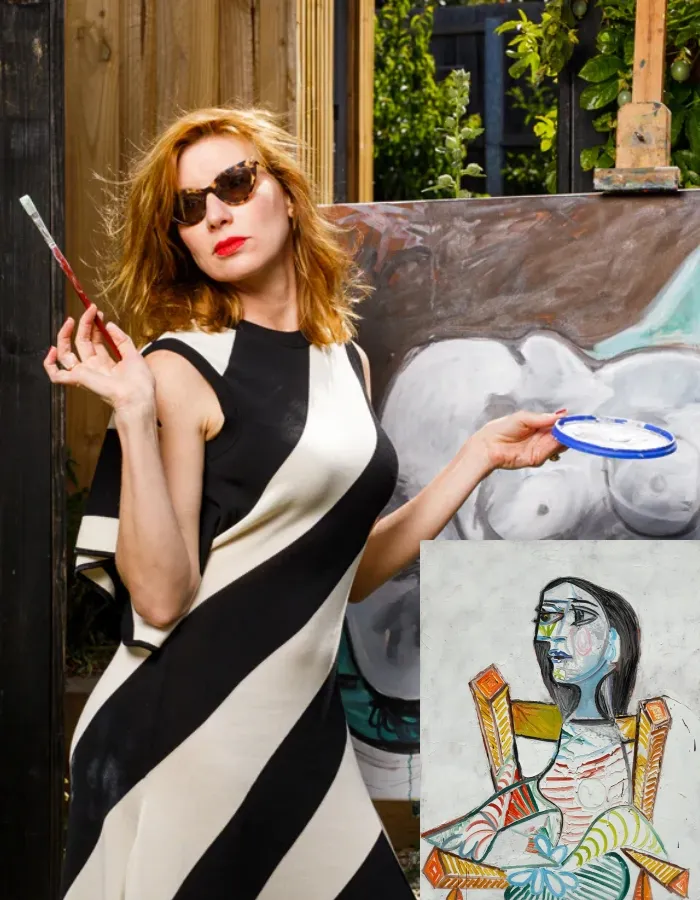
In an unexpected twist, a museum in Australia has relocated several Picasso artworks to a women’s restroom, a move that has sparked curiosity and conversation. The decision comes after a male visitor filed a discrimination complaint, challenging the museum’s previous exhibit that restricted access based on gender.
The Original Exhibit: “Ladies Lounge”

The Picasso pieces—two paintings and a drawing—were initially part of an installation titled “Ladies Lounge” at the Museum of Old and New Art (MONA) in Tasmania. Curated by American artist Kirsha Kaechele, the exhibit, which opened in December 2020, was designed exclusively for women. The “Ladies Lounge” was described as a lavish and indulgent space where women could enjoy gourmet treats, drinks, and view art in an elegant, velvet-draped room, served by a male butler.
Legal Challenges and Relocation
However, the exhibit faced legal scrutiny when Jason Lau, a visitor from New South Wales, was denied entry on April 1, 2023. Lau, who had paid the entry fee, argued that the gender-based exclusion constituted direct discrimination. Following his complaint to Equal Opportunities Tasmania, the Tasmanian Civil and Administrative Tribunal ruled in April that the exhibit violated Australia’s 1998 Anti-Discrimination Act.
Kaechele defended the gender restriction, stating that it was an intentional part of the art experience, aimed at highlighting the exclusion and discrimination women have historically faced. Despite her defense, MONA was ordered to cease the gender-exclusive policy, prompting the closure of the “Ladies Lounge.”

A Creative Solution: Picasso in the Ladies’ Room
In response to the ruling, Kaechele found a unique solution: moving the Picasso artworks to a women’s restroom within the museum. This newly upgraded space, aptly named the “Ladies Room,” features the artworks alongside a fully functional toilet. The relocation serves as both a temporary measure while the “Ladies Lounge” undergoes revisions and as a playful nod to the original exhibit’s theme. Kaechele humorously remarked that the museum’s bathrooms could use some “Cubism in the cubicles,” highlighting the continued fusion of art and experience in her work.
Future of the “Ladies Lounge”
While the “Ladies Lounge” remains closed, Kaechele has expressed her intention to challenge the tribunal’s ruling in the state’s Supreme Court. She is also exploring various loopholes under Section 27 of the Anti-Discrimination Act, which outlines circumstances where gender-based discrimination might be legally permissible. In a Q&A published on the museum’s website, Kaechele discussed possible ways to revive the exhibit, suggesting concepts like transforming it into a church, school, or even a gender-specific restroom to comply with the law.

The relocation of Picasso’s artworks to a restroom is a bold statement on the intersections of art, law, and gender politics. By placing these masterpieces in such an unconventional setting, MONA continues to challenge traditional notions of where and how art should be displayed, while also navigating the complex legal landscape surrounding gender discrimination. As the museum and its curator continue to explore creative solutions, the story of the “Ladies Lounge” and its Picassos remains an evolving narrative in the world of contemporary art.






